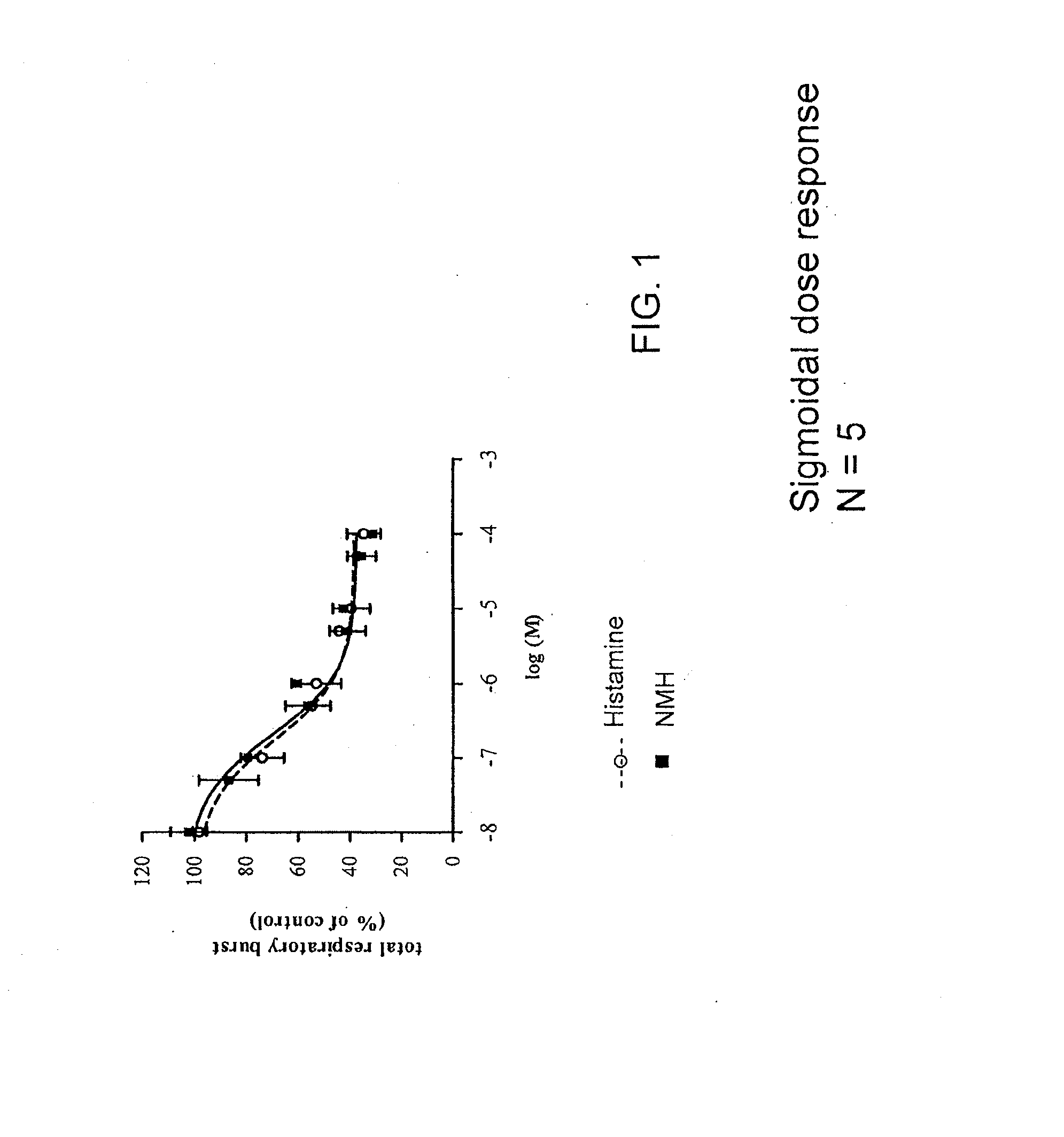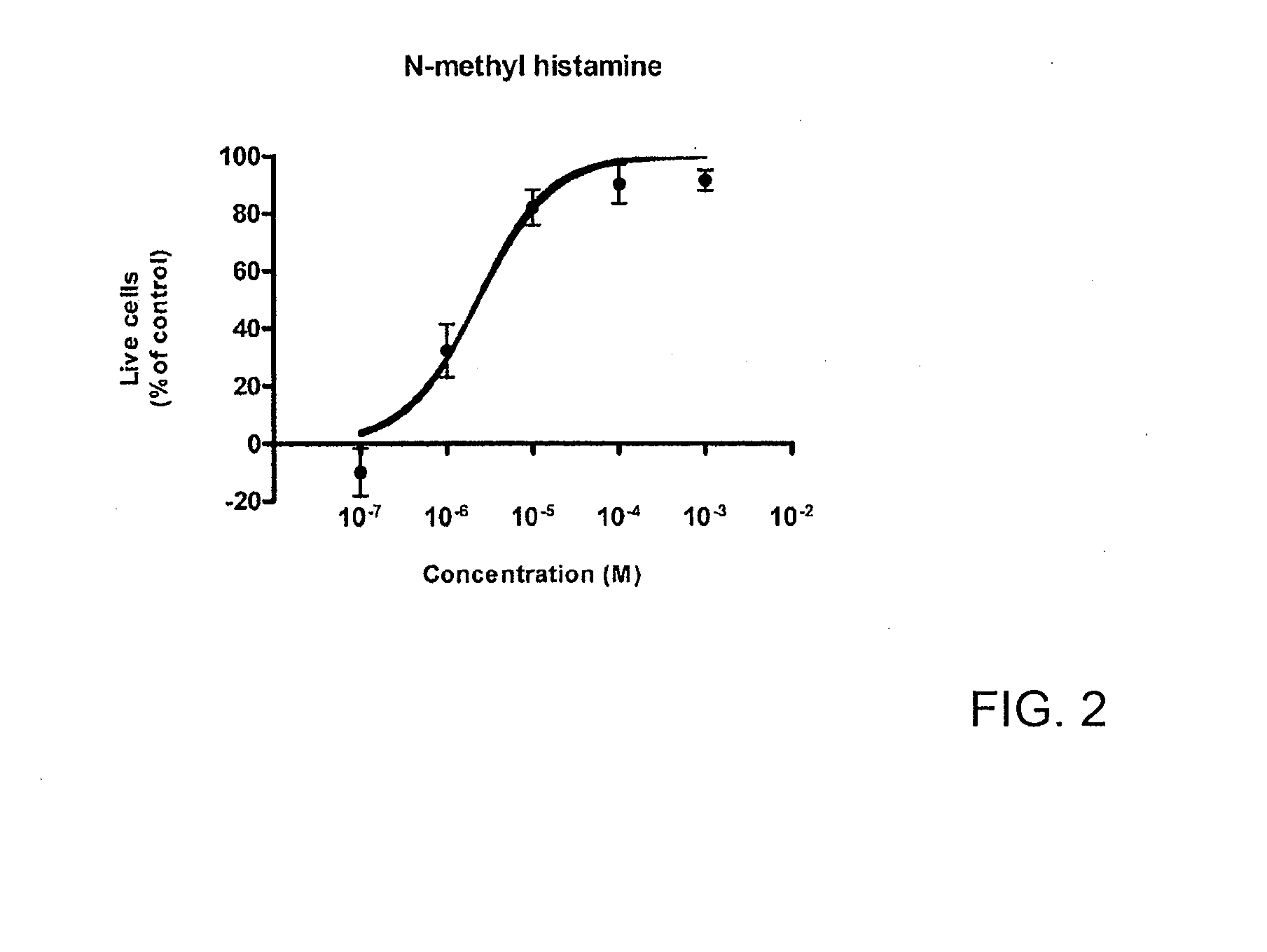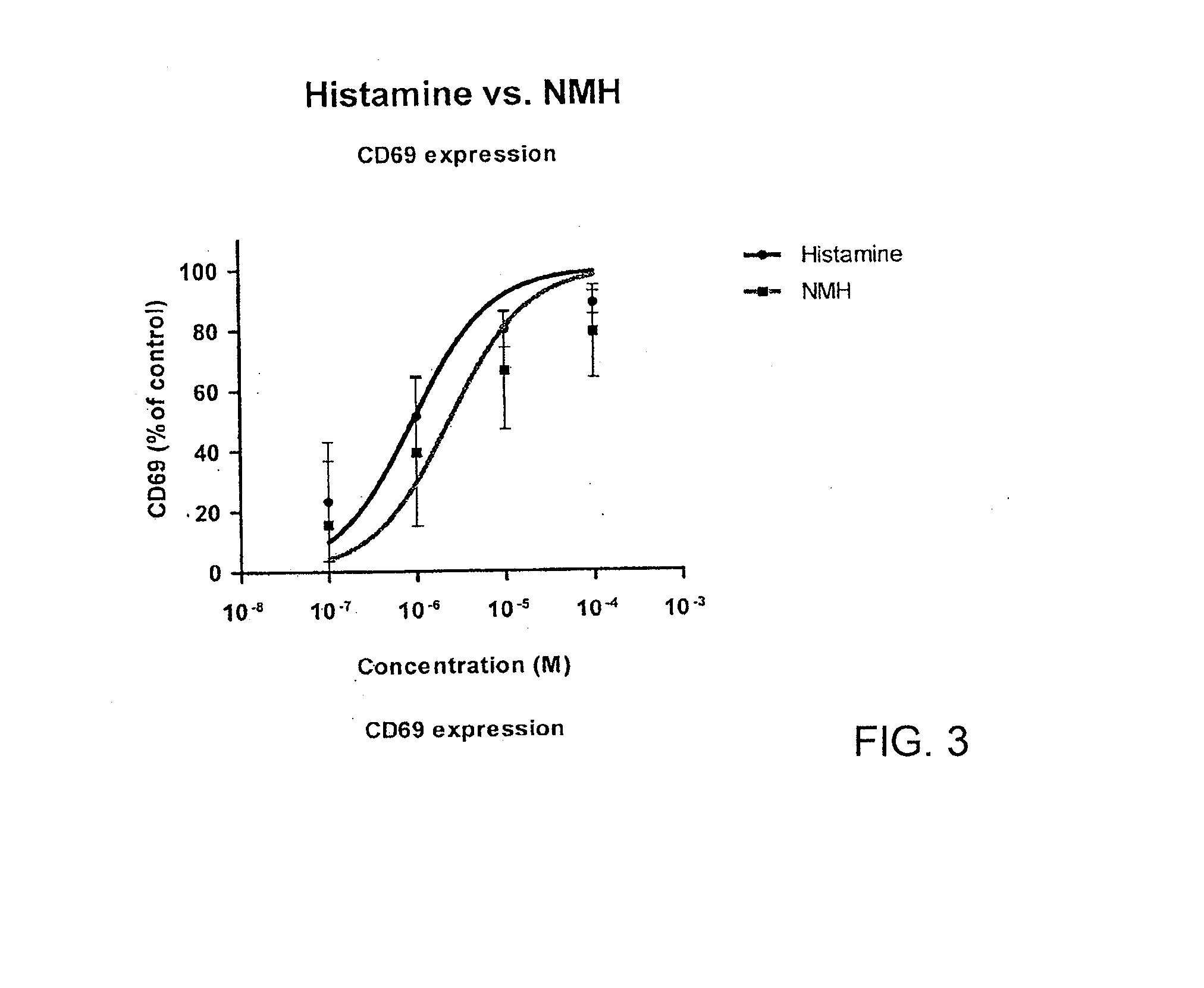Composition and use of n-alpha-methylhistamine dihydrochloride for the reduction of oxygen radical formation
a technology of n-alpha-methylhistamine and dihydrochloride, which is applied in the direction of growth factors/regulators, animal/human proteins, biocide, etc., can solve the problems of untoward number, unfavorable use of histamine, and damage to neighboring cells, so as to reduce the formation of oxygen radicals, and enhance the nk cell response to il-2
- Summary
- Abstract
- Description
- Claims
- Application Information
AI Technical Summary
Benefits of technology
Problems solved by technology
Method used
Image
Examples
example 1
[0094]The effects of histamine dihydrochloride (HDC) and N-α-MH on oxygen radical formation by human mononuclear phagocytes in response to N-formylmethionyl-leucyl-phenylalanine (fMLF) were evaluated. Mononuclear phagocytes were isolated and oxygen radical formation was measured as described in Hellstrand et al., J. Immunology, vol. 153, pp 4940-7, hereby incorporated by reference in its entirety. HDC or N-α-MH were preincubated with cells for five minutes followed by the addition of fMLF and then oxygen radical production was assessed.
[0095]FIG. 1 illustrates the results of experiments performed to assess the effect of N-α-MH on oxygen radicals (superanion production) in human mononuclear phagocytes. The results indicate that N-α-MH is a potent inhibitor of oxygen radical production. The maximal response in terms of oxygen radical inhibition of N-α-MH is at least comparable to HDC in vitro as illustrated in FIG. 1. As will be described below, N-α-MH was approximately 10 times more ...
example 2
[0096]The ability of N-α-MH to protect NK cells from apoptosis inflicted by mononuclear phagocytes was evaluated. Cells were prepared as described by Hellstrand et al., J. Immunol., vol. 153, pp 4940-7, and mixtures of mononuclear phagocytes and NK cells were incubated overnight with HDC or N-α-MH at indicated final concentrations in 96-well microplates. Thereafter, cells were recovered and NK cells were analyzed for apoptosis (forward and side scatter) as described in Betten et al., J. Clin. Invest. Vol. 108, pp 1221-8 (hereby incorporated by reference in its entirety). FIG. 2 plots the results of six similar experiments.
[0097]The ED50 values for protection of NK cells were 2.2 μM for N-α-MH. The fact that the ED50 value was slightly higher than in the oxygen radical burst experiment described in Example 1 is likely attributable to consumption of the compound during the overnight assay.
[0098]Histamine dihydrochloride protects NK cells from apoptosis by inhibiting the release of oxy...
example 3
[0099]Three separate experiments were performed as described above with the addition of human recombinant IL-2 (50 U / ml) during the overnight incubation. The experiments were initiated with the aim at clarifying whether N-α-MH synergizes with IL-2 to activate NK cells in a fashion similar to HDC. The activation of NK cells by IL-2 was measured as the capacity of these cells to express the cell surface activation antigen CD69 (See, generally Hellstrand et al. JI 1994). The results of these experiments are demonstrated in FIG. 3.
[0100]As illustrated in FIG. 3, N-α-MH, at concentrations similar to those required for oxygen radical inhibition and NK cell protection, synergized with IL-2 to induce expression of CD69 on NK cells.
[0101]When compared with HDC, N-α-MH is as potent and efficacious in inhibiting oxygen radical production. N-α-MH also protects human NK cells and synergizes with IL-2 to activate NK cells.
PUM
| Property | Measurement | Unit |
|---|---|---|
| Frequency | aaaaa | aaaaa |
| Frequency | aaaaa | aaaaa |
| Cytotoxicity | aaaaa | aaaaa |
Abstract
Description
Claims
Application Information
 Login to View More
Login to View More - R&D
- Intellectual Property
- Life Sciences
- Materials
- Tech Scout
- Unparalleled Data Quality
- Higher Quality Content
- 60% Fewer Hallucinations
Browse by: Latest US Patents, China's latest patents, Technical Efficacy Thesaurus, Application Domain, Technology Topic, Popular Technical Reports.
© 2025 PatSnap. All rights reserved.Legal|Privacy policy|Modern Slavery Act Transparency Statement|Sitemap|About US| Contact US: help@patsnap.com



